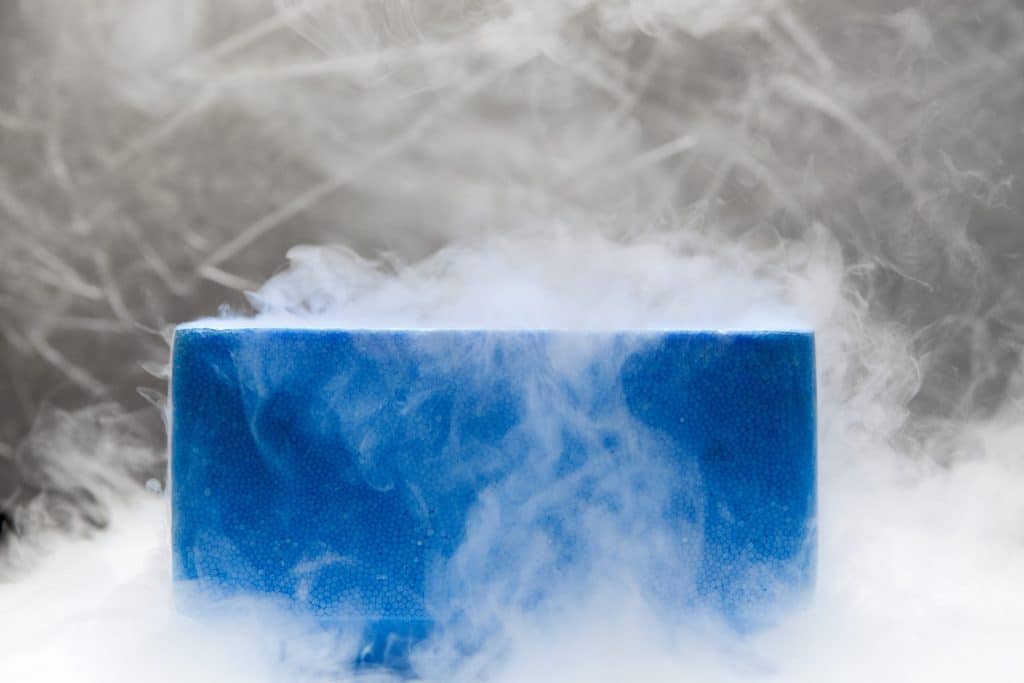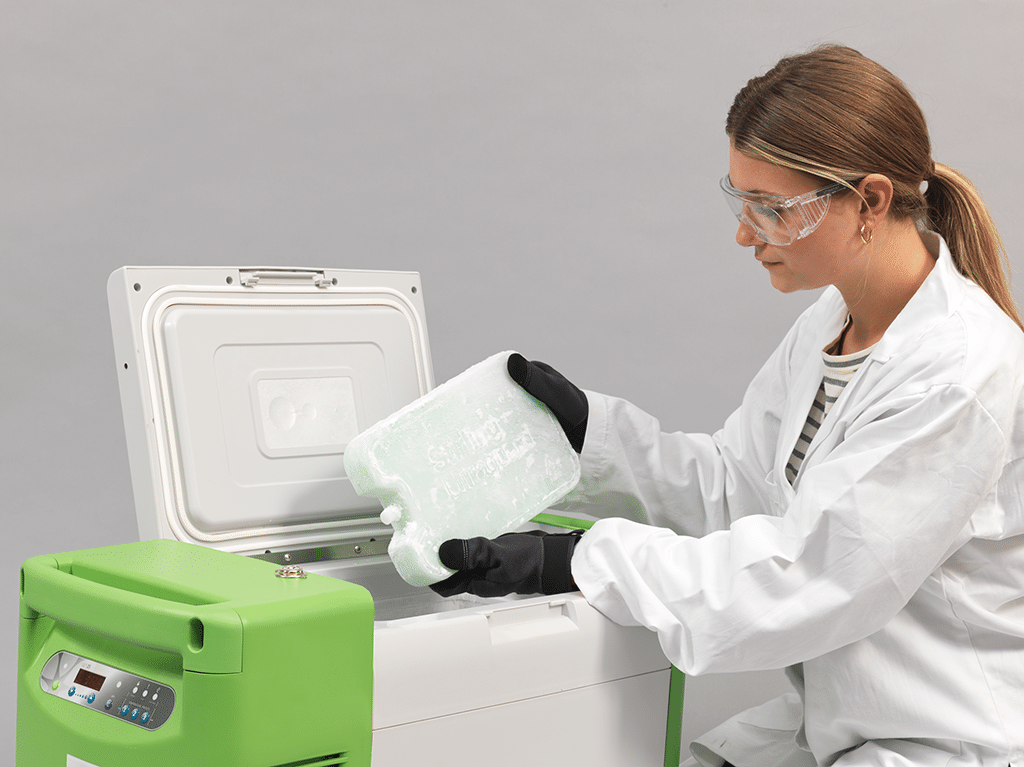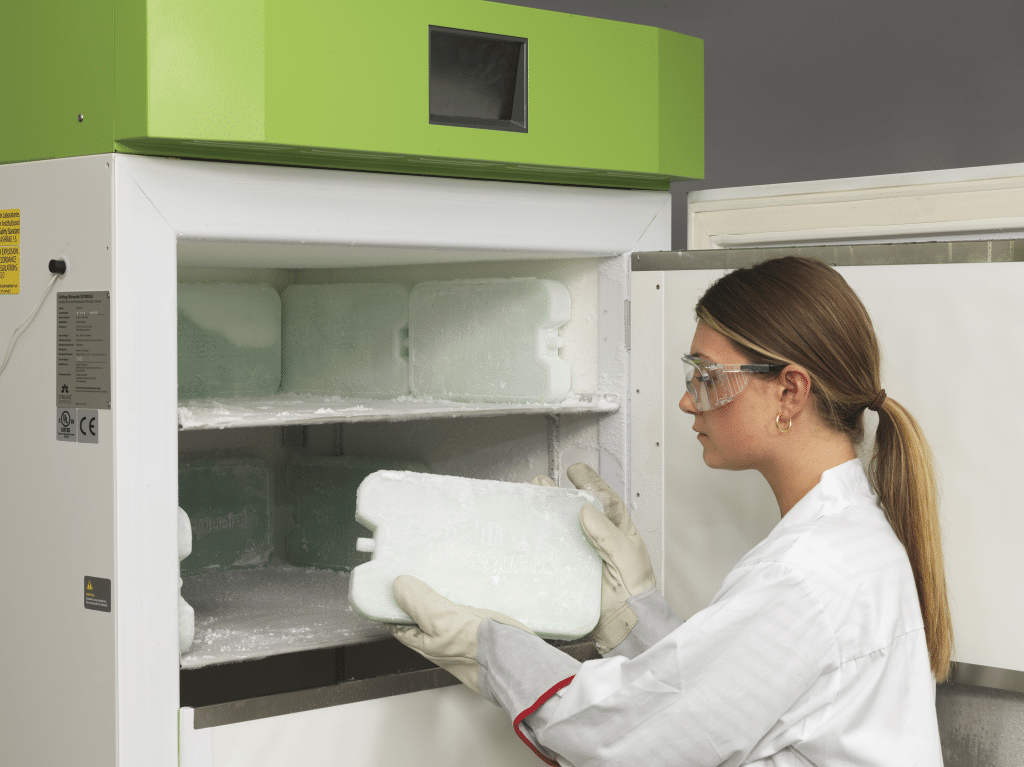Stirling Ultracold recently launched a new -70°C Phase Change Material (PCM), by the name of Stirling Ultraguard™. In the cold chain, PCM is a commonly used term, but it may not be as common to the Biotech or Life Sciences community. However, just because the term PCM isn’t commonly used doesn’t mean you haven’t encountered it. The basic phase change materials used in science are ice and dry ice. This blog post will break down the basics of what a PCM is and how it might be used, including the tested use cases for Stirling Ultraguard..
What is PCM?
A PCM is any material that undergoes a phase transition, expelling heat (energy) when it is cooled below a certain temperature. This is called the latent heat of fusion. Water is the most common PCM used in everyday life. Below 32°F or 0°C, water crystalizes into ice. The latent heat of fusion during this transition is 334 kilo-Joules of energy per 1 kilogram of ice, or more commonly written 334 kJ/kg (144 BTU/lb.).1.
Dry ice is another common PCM used in the life science space for storage and maintaining ultra-low temperatures (<-40°C) during sample shipments. Dry ice is made by liquefying carbon dioxide and injecting it into a holding tank, where it’s frozen at a temperature of -109° F and compressed into solid ice. Depending on whether it’s created in a pelletizer or a block press, dry ice can then be made into pellets or large blocks.2 It is non-toxic, but flammable, and sublimates directly from a solid to a gas with a latent heat of fusion of 197.71 kJ/kg (85 BTU/lb.).

Stirling Ultraguard closely aligns with dry ice, but does not require a regular supply of liquid carbon dioxide for production. Ultraguard is a non-toxic, salt-based PCM that if cooled below -86°C will transition from a liquid to a solid state with a latent heat of fusion of 190 kJ/kg (81.7 BTU/lb.).
Why is this important? Over the past few years, different geographical regions have encountered a carbon dioxide shortage, which in turn means dry ice supply issues.3 This became hypercritical when Pfizer, Moderna, and third-party logistics companies were trying to distribute COVID-19 mRNA vaccines across the globe at ultra-low temperatures.
How is PCM used?
There are multiple uses for PCM, as there are multiple types, with a range of storage temperatures. For ice, it is great to cool down your drinking water on a hot day or to hold on a sore muscle to fight inflammation. Ice also works great in a cooler to keep drinks cold at the beach.
Dry ice is often used when needing to keep a sample cold, for a limited period of time. Whether this be in a transport device or at a workstation, dry ice is used to keep the biological materials ultracold while being studied.
Introducing Ultraguard PCM for Ultra-Low Freezer Storage
Like ice in a beach cooler, Ultraguard inside an ultra-low temperature (ULT) freezer can help “hold the cold” in the event of a sudden power loss or during limited-range freezer transport when power may not be available. In fact, this PCM solution was designed for use with the Stirling Ultracold ULT25NEU freezer, the industry’s only portable ULT appliance. An empty ULT25NEU may be used to condition (charge) and ultimately hold the charged PCM plus critical freezer contents. When used together, conditioned Ultraguard will hold the ULT25NEU freezer below -60°C for 8+ hours.

In remote geographies where power is not always stable or clean, and dry ice is often unavailable, Ultraguard and the ULT25NEU can be used together to thermally protect critical biological materials against black and brownouts. The ULT25NEU freezer has been proven for benchtop ultra-low temperature protection in the lab, but with conditioned Ultraguard inside, it no longer needs an outlet. Further, in the laboratory or a biorepository setting, Ultraguard may be a great back-up plan or freezer accessory for upright ULT freezers to further protect critical contents during a power outage, natural disaster, or even act as additional insulation against an extremely warm ambient operating environment.
Ultra-low temperatures below -60°C are difficult to achieve and maintain. Ultraguard, after being conditioned in a ULT freezer, may now help make these temperatures a bit easier to achieve. As BioLife Solutions explores new use cases for Ultraguard, we will be sure to keep you updated.
References
- “Change in State.” Residential Energy Library, https://c03.apogee.net/mvc/home/hes/land/el?utilityname=peco2&layout=IFrame&spc=hel&id=1702#:~:text=The%20heat%20given%20off%20
- “How Dry Ice Is Made.” CryoCarb, 8 Oct. 2020, https://cryocarb.com/how-dry-ice-is-made/#:~:text=Dry%20ice%20is%20made%20by,into%20pellets%20or%20large%20blocks
- “US Faces CO2 Shortage.” Cen.acs.org, 17 Aug. 2022, https://cen.acs.org/materials/US-faces-CO-shortage/100/i29









